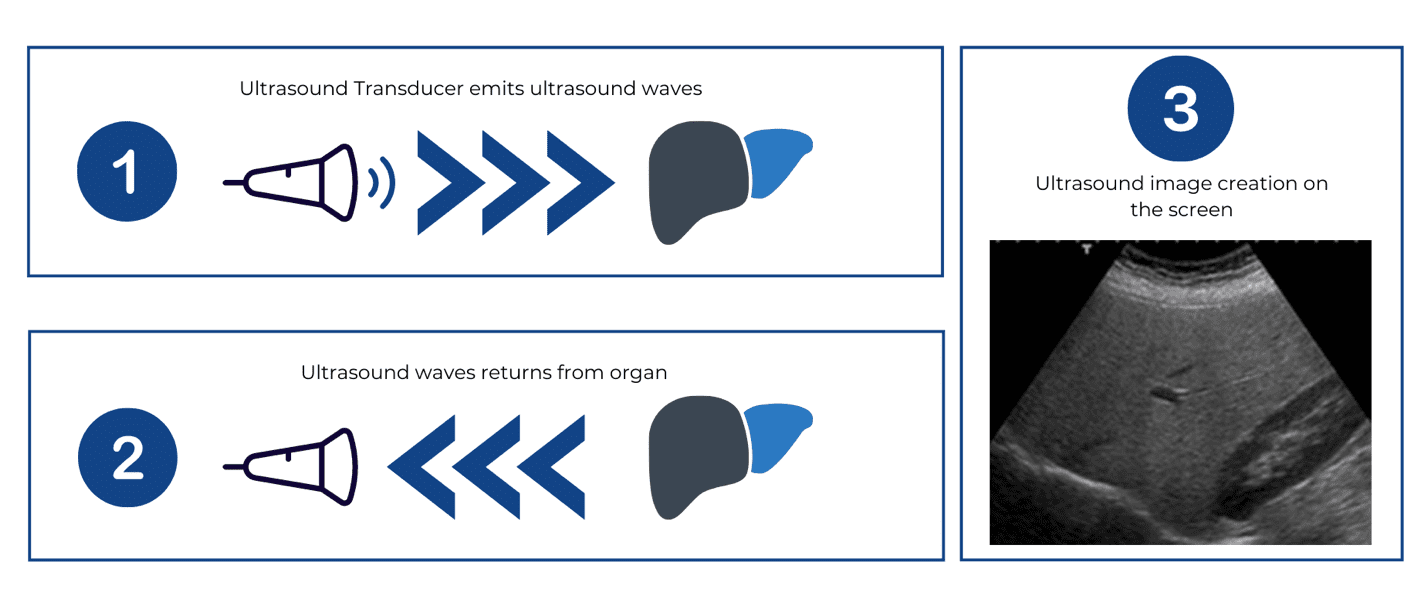Have questions about your thyroid ultrasound? We are here to answer!
Inspired by some patients’ requests, we have prepared a series of Thyroid Ultrasound articles to help you better understand those terminologies on your report and ask the right questions during your appointment. In this first article, let’s start with some basics of ultrasound.
Diagnostic ultrasound is a non-invasive imaging modality that uses non-ionizing high-frequency sound waves to produce images of your internal structures. The ultrasound transducer emits a sound beam that propagates through the tissue then waits for the returning echo reflected from the structures in the plane (path) of the sound beam, creating a grey-scale image we see on the screen.
Brightness Mode (B-Mode)
ultrasound is most frequently used in thyroid ultrasounds supplemented by Color Flow Doppler to visualize vascularity on the gland. Depending on the strengths of the returning echo, the echo is registered as dots of various brightness levels to produce the greyscale image that we see on the screen. A structure that returns a stronger (higher-amplitude) echo will display a brighter dot than a structure that returns a weaker (low-amplitude) echo.
However, the appearance of the structure’s brightness on the screen depends on its surrounding environment. In order for a structure to appear salient on ultrasound, contrast is pertinent. It is similar to the differences that you observe when you draw on a blank paper using a white crayon versus black crayon.
Structures that generate stronger echo relative to its neighboring tissues will appear brighter on the screen and vice versa. Depending on the sound attenuation (loss of sound along its path), the amplitude (strength) of returning echo of different tissues varies. Physicians and sonographers can use the varying brightness levels of tissues to characterize tissue composition.
Now, we’ve learned the basics of ultrasound physics, in the next article we will go over some common terminologies used in ultrasound.




2 Responses
Where is this Thyroid U/S test given and do you need a order for it.?
Hello Lana, yes you would need a doctor’s order to get a thyroid ultrasound.